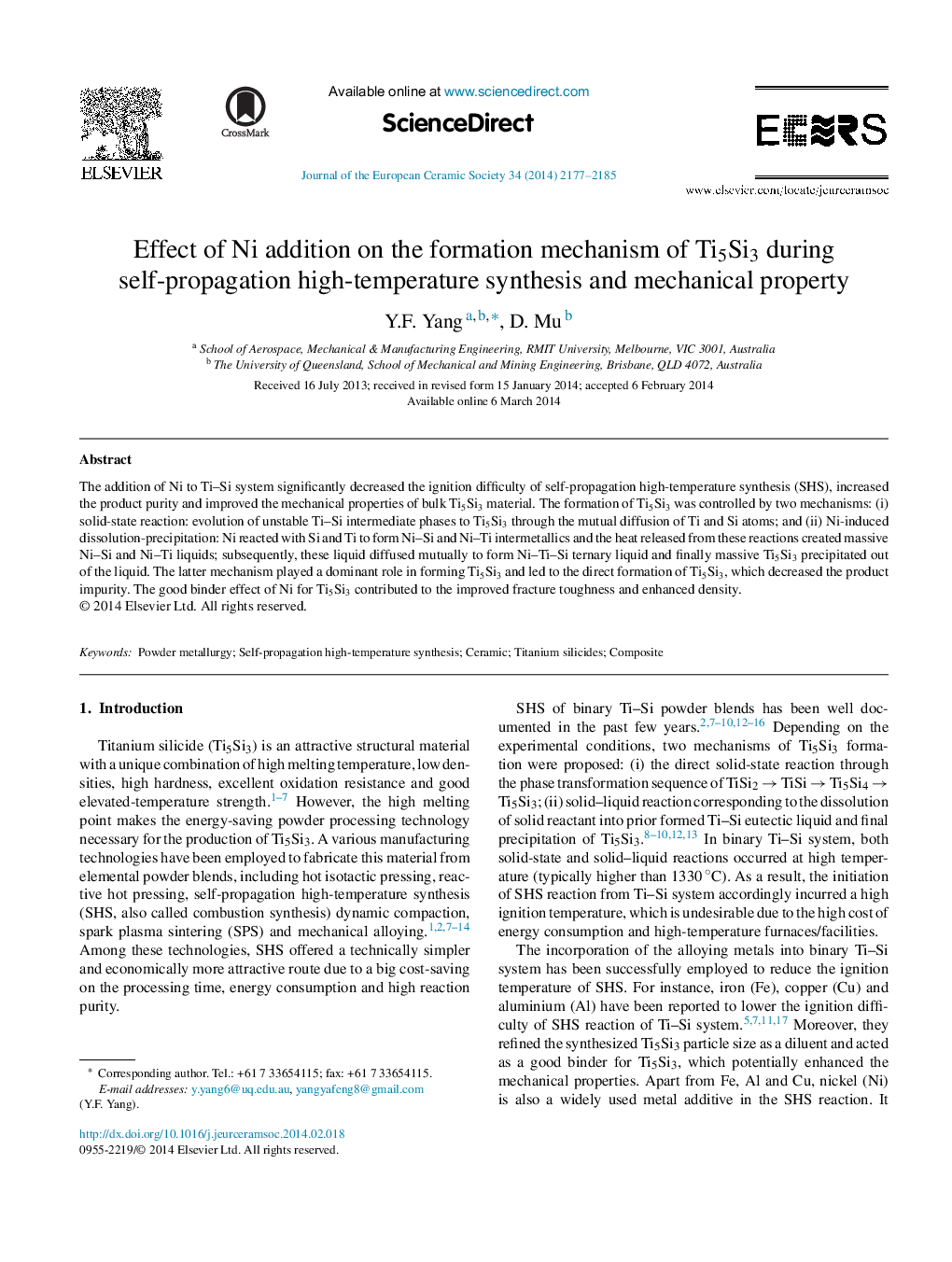| Article ID | Journal | Published Year | Pages | File Type |
|---|---|---|---|---|
| 1473800 | Journal of the European Ceramic Society | 2014 | 9 Pages |
The addition of Ni to Ti–Si system significantly decreased the ignition difficulty of self-propagation high-temperature synthesis (SHS), increased the product purity and improved the mechanical properties of bulk Ti5Si3 material. The formation of Ti5Si3 was controlled by two mechanisms: (i) solid-state reaction: evolution of unstable Ti–Si intermediate phases to Ti5Si3 through the mutual diffusion of Ti and Si atoms; and (ii) Ni-induced dissolution-precipitation: Ni reacted with Si and Ti to form Ni–Si and Ni–Ti intermetallics and the heat released from these reactions created massive Ni–Si and Ni–Ti liquids; subsequently, these liquid diffused mutually to form Ni–Ti–Si ternary liquid and finally massive Ti5Si3 precipitated out of the liquid. The latter mechanism played a dominant role in forming Ti5Si3 and led to the direct formation of Ti5Si3, which decreased the product impurity. The good binder effect of Ni for Ti5Si3 contributed to the improved fracture toughness and enhanced density.
